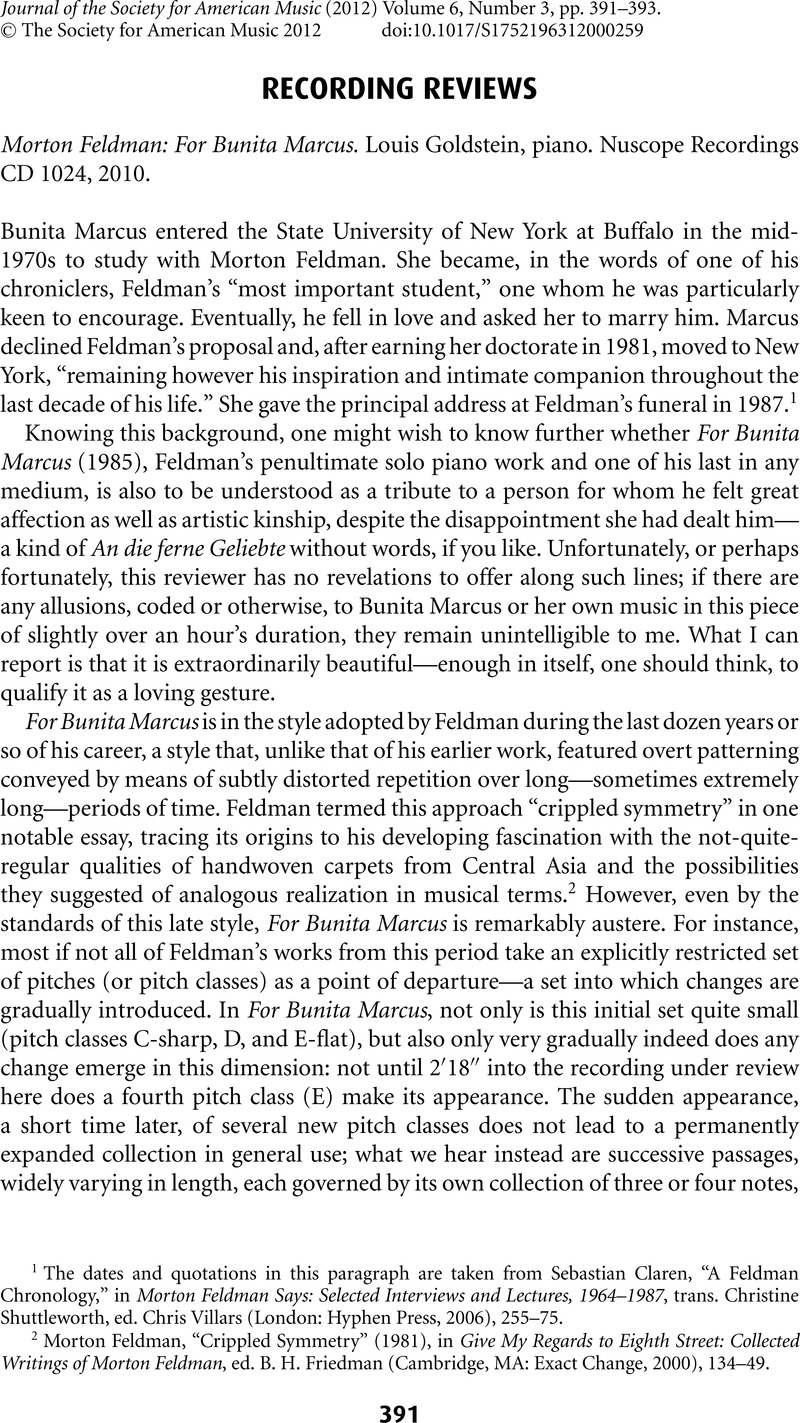No CrossRef data available.
Published online by Cambridge University Press: 13 August 2012

1 The dates and quotations in this paragraph are taken from Claren, Sebastian, “A Feldman Chronology,” in Morton Feldman Says: Selected Interviews and Lectures, 1964–1987, trans. Shuttleworth, Christine, ed. Villars, Chris (London: Hyphen Press, 2006), 255–75Google Scholar.
2 Feldman, Morton, “Crippled Symmetry” (1981), in Give My Regards to Eighth Street: Collected Writings of Morton Feldman, ed. Friedman, B. H. (Cambridge, MA: Exact Change, 2000), 134–49Google Scholar.
3 For a useful orientation to analytical issues in Feldman's late style, see Johnson, Steven, “Jasper Johns and Morton Feldman: What Patterns?” in The New York Schools of Music and Visual Arts: John Cage, Morton Feldman, Edgard Varèse, Willem de Kooning, Jasper Johns, Robert Rauschenberg, ed. Johnson, Steven [Studies in Contemporary Music and Culture, vol. 5] (New York: Routledge, 2002), 217–47Google Scholar. In the same collection, for an introduction to Feldman's aesthetic as exemplified in his earlier music as well as the late, see Jonathan W. Bernard, “Feldman's Painters,” 174–215.
4 Feldman, Morton, “XXX Anecdotes and Drawings,” in Morton Feldman Essays, ed. Zimmermann, Walter (Kerpen, Germany: Beginner Press, 1985), 168Google Scholar.
5 There have been at least four other recordings made of For Bunita Marcus, all of which are still available as of this writing. A performance that stayed strictly within the notated tempo range of ![]() = 63–66 would last between 63½ and 66½ minutes. Goldstein's is just over 67 minutes; two other pianists, Hildegard Kleeb (hat ART) and Stephane Ginsburgh (Sub Rosa), take about 71 minutes; Markus Hinterhauser's performance (col legno) extends to just under 73 minutes. All of these performances fall within the tolerances one would anticipate for such a lengthy work. Sabine Liebner, however (Oehms Classics), stretches the work out to 88 minutes, which is probably going too far.
= 63–66 would last between 63½ and 66½ minutes. Goldstein's is just over 67 minutes; two other pianists, Hildegard Kleeb (hat ART) and Stephane Ginsburgh (Sub Rosa), take about 71 minutes; Markus Hinterhauser's performance (col legno) extends to just under 73 minutes. All of these performances fall within the tolerances one would anticipate for such a lengthy work. Sabine Liebner, however (Oehms Classics), stretches the work out to 88 minutes, which is probably going too far.